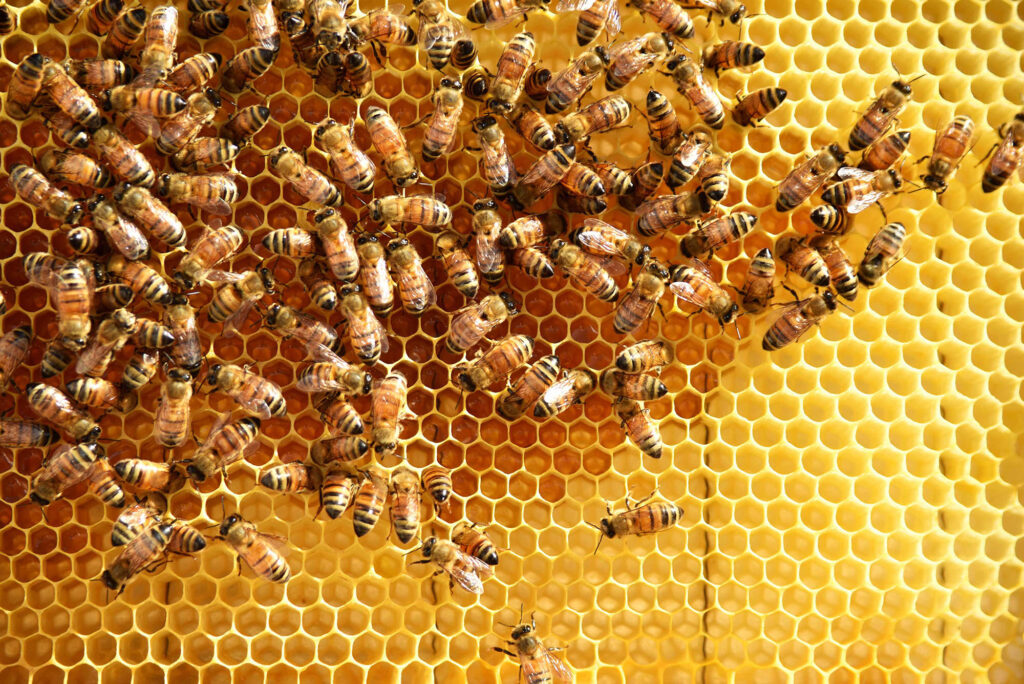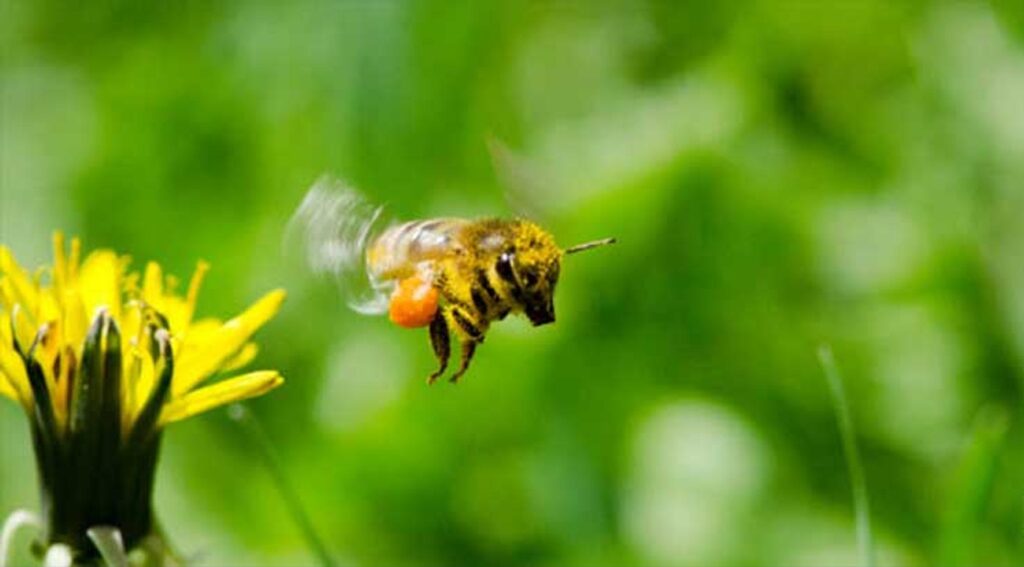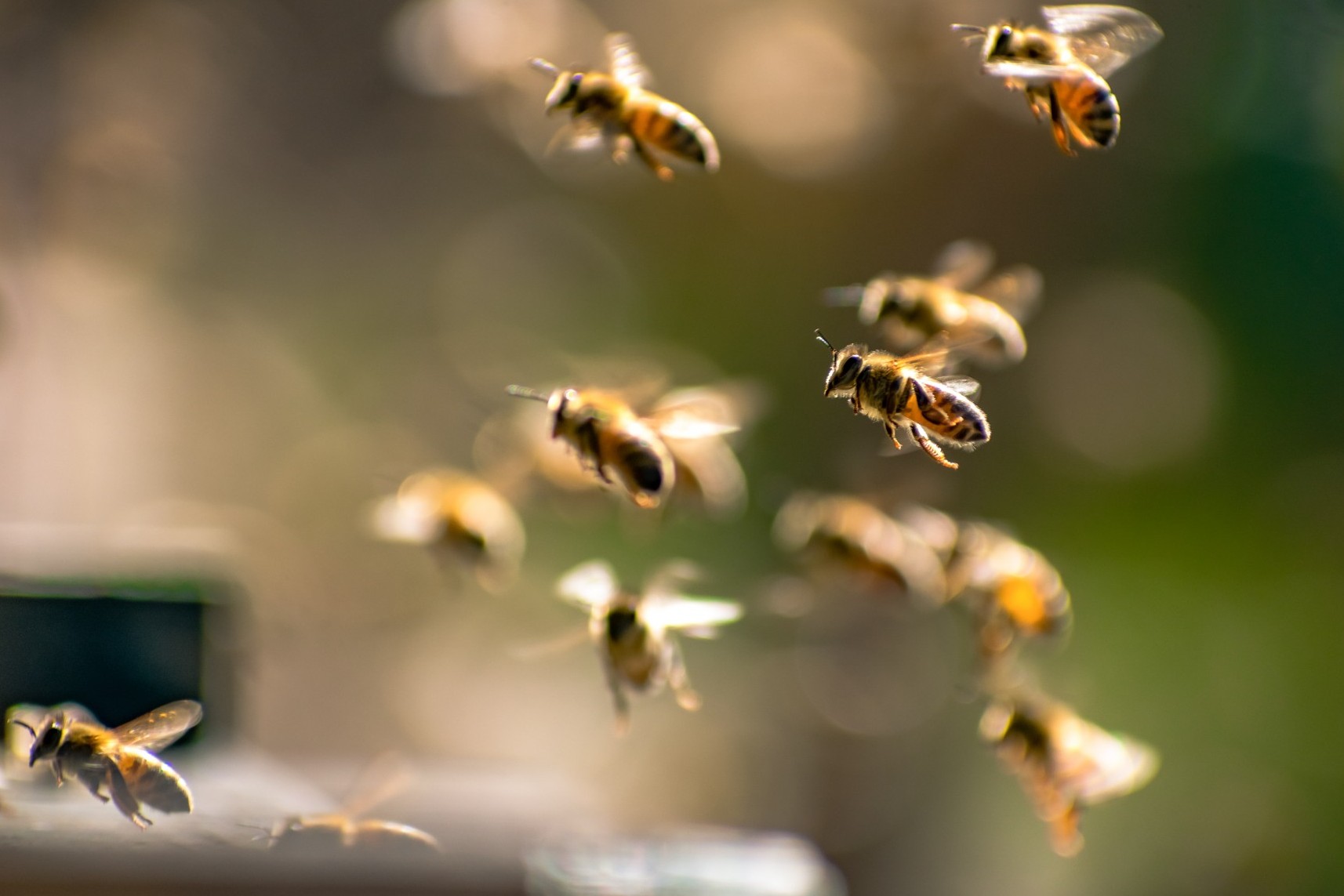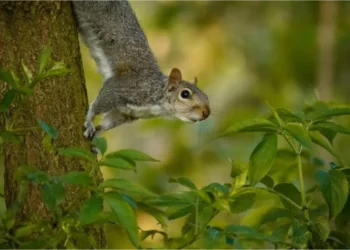Honey bees play a curial role in earth diversity and are a natural sweetener that is the eye of everyone and has no side effects. Yes, it’s honey. These industry’s creatures fascinated humans for billion and trillion of years with their social and unwavering work ethic.
So, how far does this beautiful and hardworking creature travel for honey? How far do honey bees travel from their hive? Join us on this journey of honey bees, travel with its exciting nature.
However, in this article, we will discuss how far honey bees travel from their hive to make honey and how they extract the juices of flowers and pollinate them.
Understanding The Basic Structure Of A Hive Or Honeycomb
Before understanding how far honey bees travel from their hive, it’s better to know the basics of the pack. The places where the honey bee lives. Well, honey lives in a hive; hexagonal in structure. All honey bees are not queen bees; not all bees pollinate flowers, and not every bee is fertile. The proper technique did all the systems under the honeycomb. Let’s talk about the next paragraph.
This system was divided into three classes: make bees and drones (male bees), which comprise most of the colony. The next are worker bees (females), who participate in nursing, collecting nectar, pollinating flowers, and nursing new babies. And the last one is the queen bee, under which all actions are controlled and work in a proper, smooth system.
In Addition, the team always needs supervision because work should be done and continuous in a proper flow. Another intelligent system should be maintained, processes like honeymaking should be destroyed, and quality may decline significantly.

Dance Of the Honey Bee (Communication)
Did you know foraging honey bees travel have remarkable navigation power and sharp as a knife memory due to which they communicate with their fellow? This power helps them to return to food sources properly and effectively. When worker bees discover the heaven of sector pr sources of pollen, first of all, they return to their hives and perform a especially type of dance.
It seems unusual for bees to dance, but it is a fact that they do waggle dance and tell their other fellows about sources of rich nectar and pollen so they can go there and collect nectar for delicious honey.
The “Dance of the Honey Bee” is a fascinating behavior performed by worker honey bees travel to communicate the location of a food source to other members of the hive. This dance is a complex form of non-verbal communication that conveys information about the direction, distance, and quality of the food source.
When a honey bee returns to the hive after finding a good source of nectar or pollen, it performs a dance on the vertical surface of the honeycomb. There are two primary types of dances: the round dance and the waggle dance.
- Round Dance: The round dance is used to communicate the presence of a nearby food source within approximately 50 meters of the hive. The honey bees travel in a circular pattern, alternating between clockwise and counterclockwise rotations. The other bees in the hive detect the scent and taste of the food on the dancer’s body, which stimulates their interest in the location.
- Waggle Dance: The waggle dance is used to communicate the location of a food source that is further away from the hive. The dancer moves in a figure-eight pattern, waggling its abdomen from side to side during the straight portions of the dance. The angle and duration of the waggle run relative to the vertical line of the honeycomb convey information about the direction and distance of the food source. For example, if the bee waggles in an upward direction, it indicates that the food source is located towards the sun. The length of the waggle run correlates with the distance of the food source, with longer runs indicating greater distance.
The other worker bees closely observe the dance and decode the information conveyed by the dancer’s movements. They learn the direction and distance of the food source and memorize the scent associated with it. They then fly out of the hive in search of the same food source, guided by the information provided by the dancer.
It’s important to note that the dance of the honey bee is a highly sophisticated and evolved form of communication. It allows the honey bee colony to efficiently exploit food sources in its environment and is a remarkable example of collective decision-making and information sharing within a social insect society.
Factors That Affect Foraging Distance
Several factors influence the foraging distance of honey bees travel. The availability of local food resources is a crucial factor, as bees will travel shorter distances if there are abundant floral resources nearby. Additionally, the size and population of the honey bee colony play a role, with larger colonies having a greater foraging capacity and the ability to cover larger areas. The density and diversity of flowers in the environment also affect foraging distance, as bees prefer areas with a high density of blooming flowers.
The quality of the flowers is important too, as bees are more likely to travel further for high-quality nectar or pollen sources. Weather conditions, such as temperature and precipitation, impact foraging distance, with bees being more active in warm and dry conditions. Finally, habitat fragmentation can restrict foraging distance, as the availability of suitable forage patches may be limited. Overall, a combination of these factors determines how far honey bees travel in search of food.

1. Availability Of Resources
Honeybees have the remarkable ability to fly over a broader range. If the sources of pollen and nectars are inadequate or not fount, they fly over to other areas to collect nectars and pollen, filling their nutritional needs.
The availability of resources plays a significant role in the travel patterns of honey bees. When local food resources are abundant, bees can find ample sustenance near their hive, resulting in shorter foraging distances. In such cases, bees can focus their efforts on nearby flowering plants and efficiently gather nectar and pollen without the need for extensive travel. However, when resources become scarce or limited in the vicinity of the hive, honey bees are compelled to venture farther in search of sustenance.
They extend their foraging range, exploring a wider radius to locate sufficient food sources. Bees are highly adaptable and can adjust their foraging behavior based on the availability of resources, ensuring the survival and productivity of their colony. Factors such as flower density, diversity, and quality also influence resource availability and subsequently impact the foraging distance of honey bees travel.
2. Floral Variability
Honeybees are always in search of diverse flora. Collecting nectar from the different flowers is essential to improve honey quality. If diverse flora is unavailable near the hive, honey must travel more and explore additional diversity to maintain love quality.
Floral variability significantly influences the travel patterns of honey bees. Bees are highly selective in their foraging choices, seeking out floral resources that provide them with the necessary nutrition. When there is a high variability of flower species in an area, honey bees travel have a broader range of options to choose from. This can lead to shorter foraging distances as bees can find suitable flowers nearby and efficiently collect nectar and pollen. The availability of diverse floral resources also ensures a more balanced diet for the bees, as different flowers offer different types and quantities of nutrients.
On the other hand, in areas with low floral variability, honey bees travel may need to travel greater distances to find a sufficient variety of flowers. Limited floral diversity can result in bees having to search for specific plant species that provide the essential nutrients they require. This can lead to longer foraging distances as bees explore different locations in search of suitable floral resources.
3. Condition Of The Environment
Weather condition is critical for honey to honey bees travel. If weather conditions are not good, like rainy weather, strong wind, and storms, restrict their fly to more comprehensive ranges and fly near their hive. Due to this, they also maintain their safety.
The condition of the environment plays a crucial role in influencing the patterns of honey bees travel. Honey bees are highly sensitive to their surroundings and exhibit behavioral adaptations based on environmental factors. One of the primary environmental factors that impact honey bee travel is weather conditions. Bees are more active and tend to forage over longer distances during warm, sunny, and dry conditions. Adverse weather, such as rain, strong winds, or extreme temperatures, can restrict foraging activity and reduce the distance bees are willing to travel.
Honey bees travel, The availability of water sources also affects honey bee travel. Bees require access to water for various purposes, including maintaining hive humidity, cooling the colony, and diluting stored honey. If water sources are scarce or distant from the hive, bees may need to venture further to find suitable water bodies, thereby extending their foraging range.
4. Density Of Heart
When every colony tries to find sufficient nourishment for existence in places with a substantial number of beehive territories, rivalry for the resources that are accessible may require more extraordinary foraging lengths. As we know, it is the rule of Darwin’s survival of the fittest.
Foraging Attitude And Behavior
The worker bees begin regular foraging trips at approximately two weeks old. They start by scouting out the vicinity of the hive and becoming acquainted with features and sources of nourishment.
Honey bees travel and return to the hive precisely is made possible by these orienting travelers, which aids them in creating their mental representation of the outside world.
It takes an amalgam of sensory places of interest, the sun’s location, and the Earth’s gravitational pull for the bees to have such extraordinary orientation skills. They use the sun’s rays as a compass, keeping a constant angle concerning their position.
Bees can find their way even on days with clouds by analyzing light with polarized patterns. They also include a clock inside that aids in accounting for the sun’s shifting positions during the day.
Variability Of Hunting Planes
The next step is examining how far honey bees travel that produce honey move from their colony. A honey bee out feeding may typically travel up to five miles (eight miles) away from its hive. Still, absolute distances may differ depending on several variables, such as the proximity to nourishment resources.
Bees may traverse a broad region when scavenging because they can fly across borders for sustenance.
It’s vital to remember that most of their foraging takes place closer to home. Before moving on, bees like to concentrate on the local flower sources. They investigate plants and flowers inside the beehive’s 1-2 mile diameter to make the feeding visits as productive as possible.

The Importance Of the Hunting Range (Honey Bees Travel)
When it comes to fertilization and the excellent health of the environment, sugar bees’ forage area is essential. Many types of plants, especially crops used for agriculture, depend on bee pollination. Pollination and the development of seeds and fruits are made possible by the pollen grains transferred by insects as they go from flower to flower, gathering nectar and pollen.
Nearly all of the world’s agricultural products are thought to be pollinated by the bees that produce honey.
The Honey bees support the well-being and equilibrium of ecosystems by ensuring the genetic diversity of plant populations, facilitating cross-pollination, and flying far away throughout their feeding flights. They play a crucial part in sustaining variety and preserving the delicate equilibrium of our environment.
Risks And Difficulties
Despite their unique talents, honey bees travel encounter various difficulties and dangers while searching for food. Several factors impact the overall numbers of honey bees travel and their food search.
Including declines in habitat, exposure to pesticides, changes in the climate, and disease outbreaks. These difficulties may impair their capacity to navigate, hinder their food search, and reduce their population.
The honey bees travel is not without risks and difficulties. Honey bees face several challenges during their foraging journeys. One significant risk is predation, as bees can fall prey to predators such as birds, spiders, and insects. They must navigate through the environment while remaining vigilant and avoiding potential threats.
Another difficulty is the exposure to pesticides and chemicals. Honey bees travel may come into contact with agricultural pesticides or chemicals used in urban areas, which can have detrimental effects on their health and behavior. Pesticide exposure can impair their navigation abilities, disrupt their foraging patterns, and even lead to colony losses.
Changing landscapes and habitat loss pose additional challenges for honey bee travel. As natural habitats are lost or fragmented, bees may encounter fewer suitable foraging areas, leading to longer travel distances to find adequate resources. This can result in increased energy expenditure and potential strain on the bee population.

Benefits Of Honey
Vitamins, minerals, enzymes, and radicals are vital ingredients that may be abundant in honey. In Addition to minerals including calcium, potassium, magnesium, and iron, it also includes trace levels of the B vitamin complex, C, D, and E. Bee can support a nutritious diet even if its nutritional value could differ based on the flower origin.
Carbs, mainly in the form of fructose and glucose, are naturally present in nectar. A popular choice for athletes and others needing immediate energy, honey is made up of sugars that easily get absorbed by your body, thus giving you a quick boost of energy.
Nectar includes a variety of antimicrobial agents honey bees travel, including acidic substances, flavonoids, and phenolic substances. These antioxidants assist in the body’s efforts to combat dangerous free radicals, shielding cells from damage caused by oxidative stress and lowering the likelihood of chronic illnesses, including coronary artery disease and some forms of cancer.
Honey bees travel, Symptoms of cough and sore throats have long been treated at home with honey. Its coating of the throat with a thick, sticky texture soothes discomfort and lessens coughing. Additionally, honey has antibacterial qualities that may help stave off some bacterial illnesses that cause throat irritation.
It’s been discovered that sugar has wound-healing abilities when administered topically. Its inherent bacterial characteristics aid in avoiding infection, and the substantial amount of sugar pulls water from the area of injury to create a healing-friendly atmosphere. Manuka honey is exceptionally well known for its potent antimicrobial capabilities, as are certain other varieties of nectar.
Digestive support has long been provided by honey. It has enzymes that assist in digesting sugars and their dissolution and absorption, supporting the gut’s health. Additionally, heartburn and gastric bloating may be relieved by sugar.
Organic face moisturizers like honey are fantastic. Because of its humidifier characteristics, skin can retain moisture and avoid drying out. Honey can be added to homebody washes and face masks to hydrate skin and produce a radiant appearance.
Seasonal allergies may be relieved by consuming honey derived from local pollen sources. The body can gradually develop immunity by swallowing tiny quantities of nearby pollen via honey, possibly lessening the intensity of allergy symptoms.
In Addition to its medicinal properties, honey is a versatile culinary component. From drinks and baked products to savory marinades and sauces, it imparts an individual, inherent sweetness to various foods. Whatever the flower source, the variety of flavors and colors offered encourages the use of imagination in the kitchen.
Conclusion
In conclusion, we can see how honey bees are hard workers and patient, and make delicious honey for us. So, man must conserve biodiversity, so that we are not deprived of our natural resources. Ultimately, the travel patterns of honey bees are influenced by various factors that contribute to their foraging behavior. The availability of resources, including floral abundance and diversity, plays a crucial role in determining the distance honey bees travel. When food sources are abundant and varied nearby, bees can efficiently gather nectar and pollen within a shorter radius. Conversely, scarcity or low diversity of floral resources may require bees to venture farther in search of suitable flowers, resulting in longer foraging distances.
Honey bees travel in the conditions of the environment, such as weather conditions, water availability, and habitat fragmentation, which also affect honey bee travel. Bees are more active during favorable weather, and the presence of accessible water sources is essential for their survival and colony maintenance. Environmental disturbances, including habitat loss and pollution, can limit foraging opportunities and force bees to travel greater distances to find suitable resources.
The ability of honey bees travel to adapt and navigate their surroundings demonstrates their resilience and efficient foraging strategies. By understanding the factors that influence honey bee travel, we can better appreciate their role as important pollinators and work towards preserving healthy environments that support their well-being and the pollination services they provide to ecosystems and agriculture.



















